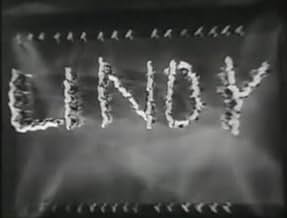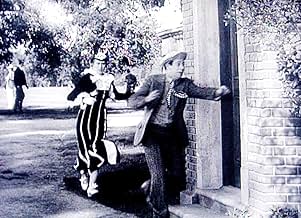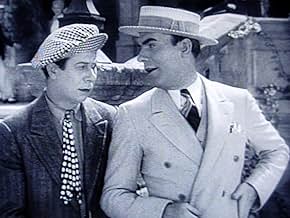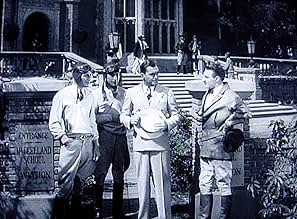Ajouter une intrigue dans votre langueAn eccentric inventor and his new flying machine are the focus of this musical comedy.An eccentric inventor and his new flying machine are the focus of this musical comedy.An eccentric inventor and his new flying machine are the focus of this musical comedy.
- Prix
- 1 victoire au total
Gus Arnheim and His Orchestra
- Gus ArnHeim's Orchestra
- (as Gus Arnheim and his Orchestra)
Loretta Andrews
- Chorus Girl
- (uncredited)
Mary Ashcraft
- Chorus Girl
- (uncredited)
Edna Callahan
- Chorus Girl
- (uncredited)
Richard Carle
- Hotel Manager
- (uncredited)
Tommy Conlon
- Undetermined Secondary Role
- (uncredited)
Nick Copeland
- Aviator with the Jokester
- (uncredited)
Janet Currie
- Chorus Girl
- (uncredited)
Mary Dees
- Chorus Girl
- (uncredited)
Commentaire en vedette
This is the rarest of beasts - a musical comedy film from 1931. Hardly any were made in either 1931 and 1932 due to the bad reputation the earliest musicals had earned in 1929 and 1930. However, almost all of the American musical films made in 1931 and 1932 featured the choreography of Busby Berkeley, and indeed this one does too.
Pat O'Brien is the best known of the three stars here, but he basically plays a supporting role in this one, prior to his recruitment by Warner Bros. first as a smart guy in the precode era and then as a father figure after the code. Sport Wardall (O'Brien) rescues Rusty Krouse (Lahr) from a group of bullies. The two team up with Wardall looking for financial backing for Rusty's aerocopter, a flying machine that ascends straight up. Ultimately Wardall finds backing from homely but man-hungry waitress Pansy Potts (the lanky Charlotte Greenwood). Her fee for the needed five hundred dollars - marriage to Rusty sight unseen.
If you've seen Greenwood chasing Buster Keaton in "Parlor, Bedroom, and Bath" or Eddie Cantor in "Palmy Days" you've seen this act before, but it's always funny. What must have seemed very odd to the audiences of 1931 was Lahr's brand of humor. Here he is carrying on just exactly like the cowardly lion in "Wizard of Oz" right down to his voice and mannerisms, so modern audiences will probably not be put off by his performance since most people today are familiar with Lahr in that part.
I rate this 4/5 for fans of the early talkies and precodes, but if you are a modern film fan you just might not appreciate this one that much.
Pat O'Brien is the best known of the three stars here, but he basically plays a supporting role in this one, prior to his recruitment by Warner Bros. first as a smart guy in the precode era and then as a father figure after the code. Sport Wardall (O'Brien) rescues Rusty Krouse (Lahr) from a group of bullies. The two team up with Wardall looking for financial backing for Rusty's aerocopter, a flying machine that ascends straight up. Ultimately Wardall finds backing from homely but man-hungry waitress Pansy Potts (the lanky Charlotte Greenwood). Her fee for the needed five hundred dollars - marriage to Rusty sight unseen.
If you've seen Greenwood chasing Buster Keaton in "Parlor, Bedroom, and Bath" or Eddie Cantor in "Palmy Days" you've seen this act before, but it's always funny. What must have seemed very odd to the audiences of 1931 was Lahr's brand of humor. Here he is carrying on just exactly like the cowardly lion in "Wizard of Oz" right down to his voice and mannerisms, so modern audiences will probably not be put off by his performance since most people today are familiar with Lahr in that part.
I rate this 4/5 for fans of the early talkies and precodes, but if you are a modern film fan you just might not appreciate this one that much.
- AlsExGal
- 17 oct. 2009
- Lien permanent
Histoire
Le saviez-vous
- AnecdotesThere was considerable pressure from the Hays Office to remove the examination scene from the movie, but MGM held firm, claiming they paid $100,000 for the rights to the play just for that particular scene. Eventually some aspects of that scene was removed when some exhibitors rejected the film. The TCM print contains the scene, but it may be the abbreviated version.
- GaffesTom Kennedy is menacing Bert Lahr because he threw an oil-soaked hat in his face. Pat O'Brien intervenes and punches oil-smudged Tom Kennedy in the stomach. Pat's cheeks are clean. Cut to Tom doubling over. Cut back to Pat with an oil smudge on his right cheek, even though Tom never touched him. Bert enters the shot offering Pat a hammer. Pat says "That's all right." Cut to long shot of Tom retreating and Pat wiping his face. No smudge in next close-up. So it appears there was more to the fight, but it was edited out.
- Générique farfeluThe credits appear as printed on the side of a dirigible.
- ConnexionsEdited into Red-Headed Woman (1932)
- Bandes originalesI'll Make a Happy Landing (the Lucky Day I Land You)
(1931) (uncredited)
Music by Jimmy McHugh
Lyrics by Dorothy Fields
Played during the opening credit and at the end
Sung by Kathryn Crawford and chorus and danced by the chorus in a production number
Played also as background music
Footage later used in Plane Nuts (1933)
Meilleurs choix
Connectez-vous pour évaluer et surveiller les recommandations personnalisées
Détails
- Date de sortie
- Pays d’origine
- Langue
- Aussi connu sous le nom de
- George White's Flying High
- Lieux de tournage
- société de production
- Consultez plus de crédits d'entreprise sur IMDbPro
Box-office
- Budget
- 634 000 $ US (estimation)
- Durée1 heure 20 minutes
- Couleur
Contribuer à cette page
Suggérer une modification ou ajouter du contenu manquant

Lacune principale
By what name was Flying High (1931) officially released in Canada in English?
Répondre


























